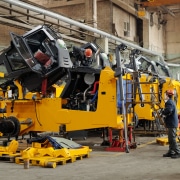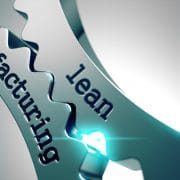In today’s business world, subcontracting has become a popular practice for many companies, allowing them to delegate certain tasks or projects to specialized external firms or individuals. This approach offers numerous benefits such as cost savings, increased flexibility, and access to expertise beyond what is available in-house. In this article, we explore the different types of companies that leverage subcontracts and why they are beneficial for each industry.
What Is Subcontracting?
Subcontracting is the practice of hiring external individuals or companies to perform specific tasks or projects on behalf of a primary contractor. It involves the delegation of certain responsibilities or services to a third party, typically with specialized skills or resources, in order to enhance efficiency and cost-effectiveness in completing a larger project.
What Are The Benefits Of Subcontracting?
In today’s competitive business landscape, companies are constantly seeking ways to reduce costs and increase productivity. Subcontracting has emerged as a popular strategy that allows businesses to outsource specific functions to specialized subcontractors, rather than hiring and training in-house employees. Below are some of the key benefits of hiring subcontractors.
- Access to specialized skills: Subcontracting allows you to access a pool of specialized skills that may not be available within your own workforce. Whether it’s health and safety contractors, equipment operation, or product assembly, subcontractors have the expertise necessary to deliver high-quality results.
- Cost savings: Hiring and training employees for specialized tasks can be expensive and time-consuming. Subcontracting allows you to avoid these costs by outsourcing specific processes to contractors who already have the necessary skills and resources. This can result in significant cost savings for your business, as you only pay for the services you need, without the overhead of hiring and maintaining a full-time workforce.
- Increased flexibility: Subcontracting provides you with the flexibility to scale your operations up or down based on demand. Instead of being limited by the capacity of your own facilities and employees, you can rely on subcontractors to handle additional orders or projects. This allows you to quickly respond to changes in customer demand and take advantage of new business opportunities without investing in additional resources.
- Reduced risk: contracts with subcontractors often include performance guarantees and quality control measures. This helps to reduce the risk of defects or delays in your processes, as the subcontractor is responsible for meeting the agreed-upon standards. Additionally, subcontracting can also help mitigate risks associated with fluctuations in demand or changes in market conditions, as you can easily adjust your subcontractor agreements to align with your business needs.
- Focus on core competencies: As a business owner, your primary focus should be on your core competencies and strategic goals. By subcontracting non-core processes, you can free up your time and resources to concentrate on areas that drive growth and competitiveness. This allows you to streamline your operations and maximize the value you deliver to your customers while leaving the specialized tasks to the experts.
8 must-know solutions for your needs in industrial subcontracting
What Industries Use Subcontracting?
Construction Industry
The construction industry commonly uses subcontracting to efficiently complete large-scale projects. Construction companies often rely on subcontractors to handle various aspects of the project, such as electrical work, plumbing, and painting. By hiring specialized subcontractors, construction companies can ensure that each task is handled by experts in that field, resulting in higher quality work and increased efficiency.
A key reason why subcontracting is common in the construction industry is the need to fulfill government contracts. Many government projects require specific certifications or qualifications, which may not be possessed by the construction company itself. By using specialized subcontractors who meet these requirements, construction companies can ensure compliance and increase their chances of winning government contracts. Subcontractors have the necessary certifications and can provide the required documentation to satisfy government regulations.
Insurance Companies
Insurance companies have long been established as prime candidates for subcontracting due to the nature of their services. From dealing with government regulations, pharmaceutical companies, and healthcare issuance, insurance companies require more help and support than other industries. They therefore outsource certain roles within the business, such as mailroom management, content management, and data capture which are all regularly carried out by subcontractors in order to streamline processes within the industry.
From customer data systems to general administrative tasks, outsourcing allows insurance companies to free up resources while still maintaining operations at optimal levels. Subcontracting also allows for different experts from various industries to be brought in to help with strategic decision-making, leading to more innovation within the company. It helps reduce costs while improving efficiency throughout the sector – ultimately providing better customer service and higher quality outcomes compared to what could have been achieved solely in-house.
Manufacturing Industry
By utilizing subcontracting in the manufacturing industry, businesses can tap into a wide range of expertise and resources that may not be available within their own organization. This can lead to improved productivity, reduced costs, and increased flexibility in meeting customer demands. Here are some common jobs that are assigned to subcontractors in the manufacturing industry:
Subcontracting in the manufacturing industry offers numerous benefits, including access to specialized skills, cost savings, increased flexibility, reduced risk, and the ability to focus on core competencies. By leveraging the expertise and resources of subcontractors, you can optimize your manufacturing processes and drive greater efficiency and profitability for your business.
Hire professional subcontractors
Healthcare Industry
By utilizing subcontracting in the healthcare industry, one can tap into specialized expertise and resources that may not be available within their own organization, leading to improved efficiency and cost-effectiveness. Subcontracting allows healthcare organizations to access a wide range of services, such as medical coding, billing, and transcription, which require specific skills and knowledge. By giving these tasks to specialized contractors, healthcare providers can ensure accurate and timely processing, reducing errors and improving overall efficiency.
Another benefit of subcontracting in the healthcare industry is the flexibility it offers in managing workforce needs. Healthcare organizations often experience fluctuations in demand for services, and subcontracting allows them to quickly adjust their staffing levels without the commitments and costs associated with hiring and training full-time employees. By engaging independent contractors, healthcare providers can scale their workforce up or down as needed, ensuring that patient care is not compromised during busy periods or when faced with unexpected challenges.
Marketing and Advertising Industry
The marketing and advertising industry thrives on subcontracting, allowing companies to tap into a vast network of talent and resources to create impactful campaigns and reach their target audiences effectively. Marketing agencies often rely on subcontractors to handle various aspects of their projects, such as graphic design, copywriting, social media management, and market research. By outsourcing these tasks, marketing agencies can focus on their core competencies and deliver high-quality results to their clients.
By subcontracting certain tasks, companies can avoid the need to hire permanent employees and incur the associated business expenses such as labor costs and employee benefits. This flexibility allows businesses to allocate their resources more efficiently and adapt to changing project demands. Moreover, subcontracting enables companies to access specialized expertise on an as-needed basis, eliminating the need for extensive training or the risk of hiring and retaining in-house talent.
Transportation and Logistics Industry
Subcontracting has revolutionized the transportation and logistics industry, as companies look for ways to streamline their operations and improve efficiency. One area where subcontracting is particularly prevalent is in the delivery of goods. Companies rely on third-party logistics providers to transport their products from warehouses to customers. These subcontractors have the expertise and resources to handle the intricacies of transportation, including route planning, scheduling, and managing the delivery process. They also often have access to specialized equipment, such as refrigerated trucks, that may be necessary for transporting perishable goods.
Subcontracting in the transportation and logistics industry also extends to other areas, such as maintenance and repair. Companies often hire subcontractors to service and repair their fleet of vehicles, ensuring that they remain in optimal condition. Additionally, subcontractors may provide services such as commercial vehicle insurance and equipment insurance, which are essential for protecting assets in the transportation and logistics industry. By utilizing subcontractors for these services, companies can avoid the expense and administrative burden of maintaining an in-house team.
Event Planning Industry
In the event planning industry, subcontracting plays a crucial role in ensuring smooth operations and successful events. Many event planners rely on subcontractors who specialize in venue management to handle the logistics of finding and securing the perfect venue for their clients. These subcontractors not only have access to a wide network of venues but also possess the expertise to negotiate contracts, manage bookings, and coordinate with venue staff to ensure a seamless event experience.
Another area where subcontracting is prevalent in event planning is event production. This includes audiovisual services, lighting design, and stage setup. Event planners often subcontract these tasks to production agencies who have the technical knowledge and equipment necessary to create stunning visual displays and immersive audio experiences. By subcontracting event production, planners can focus on the creative aspects of event planning while leaving the technical aspects in the hands of experts.
Film and Entertainment Industry
Subcontracting seamlessly brings together the creative talents of actors, directors, and production crews to produce unforgettable movies and captivating performances. In this industry, subcontracting plays a crucial role in ensuring the smooth execution of projects. One key aspect of the industry which is commonly assigned to subcontractors is the use of talent agencies. Through subcontracting, talent agencies connect the right actors to the right roles, taking into consideration factors like availability, skills, and experience.
Another key example of subcontracting in the entertainment industry is the hiring of production crews. In the film and entertainment industry, subcontracting is often used to assemble these specialized teams to complete an entire project. Prime contractors, responsible for overseeing the entire production, subcontract different aspects of the project, such as lighting, set decoration, and audio crews to ensure that each component is handled by experts in their respective fields. This allows for efficient resource allocation and ensures that the project is completed to the highest standards.
Subcontracting Services
One of the key industries that leverages subcontracting is the manufacturing industry thanks to the increased efficiency and cost savings it affords. At Groupe Hyperforme, we understand the need for high-quality subcontractors which is why we offer reliable end-to-end subcontracting services that can adapt to any manufacturing project.
Our services include:
- Metal processing
- Laser Cutting
- Wood and rubber processing
- Robotics
- Automation
- Electromechanics
- Composite and plastics processing
Our aim is to provide you with effective and efficient solutions for your manufacturing needs, making the entire process as seamless as possible.















